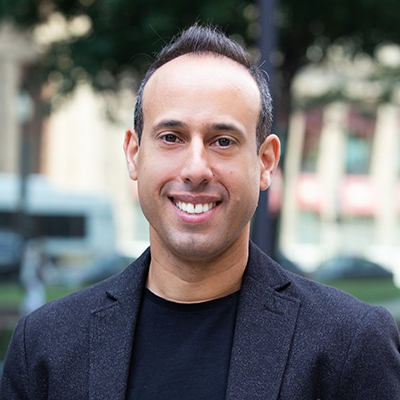Q1. Fortinet's recent threat report showed a record increase in AI-enabled, automated cyberattacks over the past year. What are the implications of this trend for organizations that might not be able to match the AI capabilities of nation-state actors and well-funded criminal groups?
While threat actors are certainly incorporating AI into their attack toolboxes, it’s critical to understand that the sensational, doomsday scenarios we often hear about are still largely theoretical. AI isn’t yet reinventing cyberthreats—instead, it’s turbo charging them.
Today, we’re observing threat actors primarily use AI to enhance the efficiency and scale of existing techniques like social engineering and malware deployment. Attackers rely on AI as an “easy button,” using the technology to automate labor-intensive tasks like scaling reconnaissance efforts and optimizing credential-stuffing attacks, create highly personalized and contextually relevant social engineering communications in convincing language, and optimize existing malicious code to evade detection.
The technology is also lowering the barrier to entry for cybercriminals, making it easier for both novice and skilled threat actors to execute successful attacks. To that point, we’re seeing the rapid growth of AI-as-a-Service models on the dark web. Much like Ransomware-as-a-Service models that became common in the past decade, cybercriminals can purchase AI-enhanced services that provide reconnaissance tools, deepfake generation, or social engineering kits targeted at specific industries or languages.
While there are many ways attackers can use AI in the future, the good news is that AI-driven attacks aren’t unstoppable and defenders have also been advancing defensive approaches and technologies (and leveraging AI for their own purposes) just as quickly. Security teams are already beginning to embrace activities like AI-powered threat hunting, hyper-automated incident response capabilities, and the potential rethinking of security architectures.
Let’s not forget the role that public-private partnerships play in evolving our collective defenses. AI will continue to impact every aspect of cybersecurity, and no single entity can successfully navigate this shift alone. Success will depend not just on technology, but on cooperation, flexibility, and continuous adaptation.
Q2. How has Fortinet enhanced its global threat intelligence capabilities to help organizations stay ahead of evolving supply chain attacks, especially those involving SaaS providers?
Global threat intelligence plays a vital role in helping security practitioners to understand, detect, and defend against all types of attacks, including those involving their respective supply chains. Established nearly 25 years ago, our FortiGuard Labs team has long been at the forefront of threat intelligence and cybersecurity innovation, processing millions of global events daily. The evolution of cyber threats has impacted corresponding advances in how we gather, process, and share threat intelligence.
Beyond simply collecting and sharing these insights with the cybersecurity community, we integrate our threat intelligence across our internal and external attack surface management offerings. By combining these into a platform with FortiRecon—Fortinet’s continuous threat exposure management product—we gain visibility into both internal and external assets. This provides a more comprehensive view of the attack surface including the supply chain, as well as the relevant risks that surround it.
Additionally, FortiGuard Labs team also specifically monitors the entire supply chain ecosystem, closely tracking the threat actors who specifically target hardware manufacturers, software vendors, and service providers with detection and protection in mind. We analyze attack patterns, tactics, techniques, and indicators of compromise (IoCs) from previous supply chain incidents to predict how threat actors may behave in the future—adjusting our approach and communicating to our customers and the broader cybersecurity community accordingly.
Q3. What do you expect Black Hat USA 2025 attendees will be most interested in hearing from Fortinet at the event? How does your company plan on engaging with the broader security community there?
As we look across the current threat landscape, we’re seeing emerging trends reshaping the attack environment and defensive approaches.
In addition to the ways in which AI is impacting the cybersecurity industry, threat actors are shifting left. Cybercriminals are increasingly adopting a nation-state level of sophistication, which stems from newfound funding that allows cybercrime organizations to operate with greater resources and precision.
Attack strategies are becoming more targeted. According to our 2025 Fortinet Global Threat Landscape Report, adversaries are expanding beyond traditional data theft and now targeting critical services and operational infrastructure.
There’s also a fundamental shift in attack methodology. Instead of breaking into networks directly, attackers are visiting cybercriminal marketplaces on the dark web to purchase stolen credentials, lowering the barrier to entry for cybercrime.
In response, defenders are strengthening their Security Operations Centers (SOCs), using generative and agentic AI to reduce analysis cycles and filter through the noise. The evolution of the SOC is especially important given the persistent cybersecurity skills gap and the analyst burnout that impacts our entire industry.
While strengthening individual defenses is crucial, public-private partnerships play a vital role in enhancing our collective cyber resilience—from building the future cyber workforce to creating initiatives designed to facilitate the sharing of threat intelligence that helps disrupt global cybercrime operations. One example of this is Fortinet’s ongoing work with the UC Berkeley Center for Long-Term Cybersecurity. Together, we’re creating a series of tabletop exercises (TTXs), surveys, workshops, and interviews, all of which will engage subject matter experts and share findings in a public-facing report and follow-on presentations. The project simulates real-world scenarios to help defenders better understand the dynamics of AI-powered cybercrime, enabling the development of forward-looking defense strategies.








